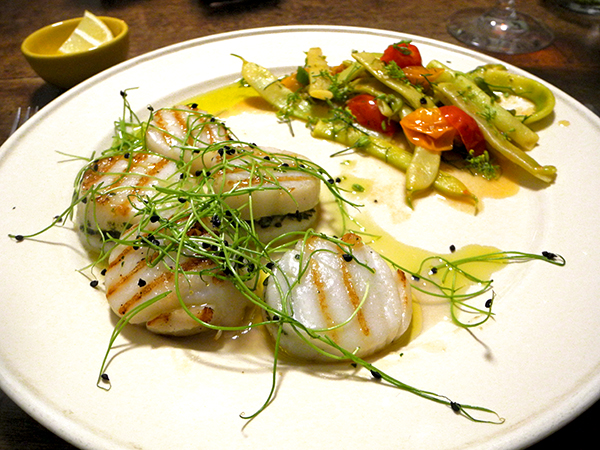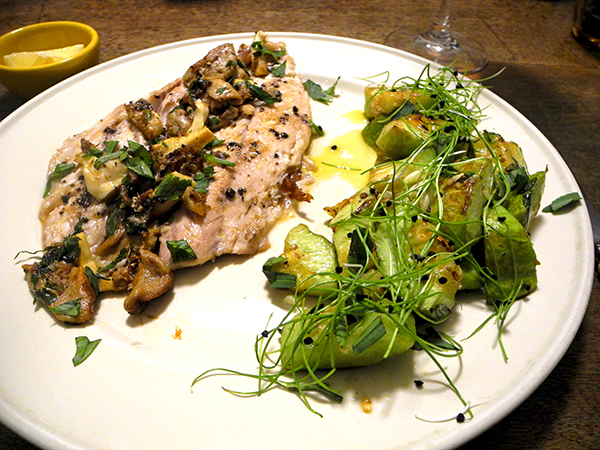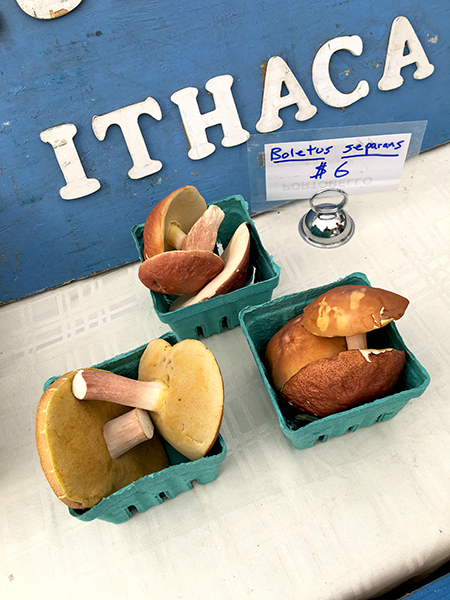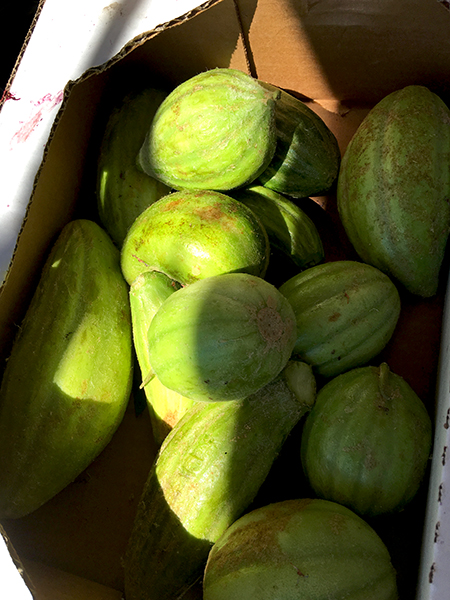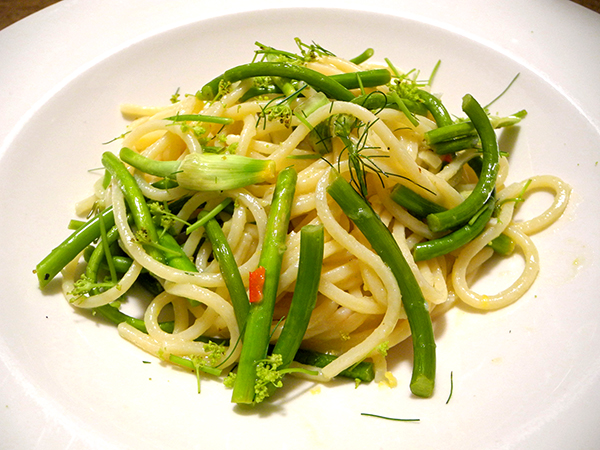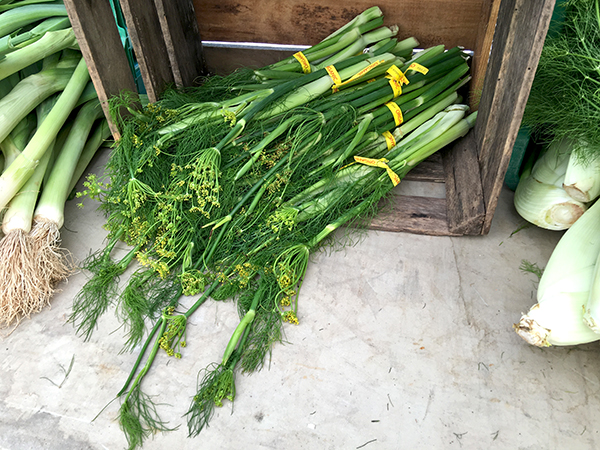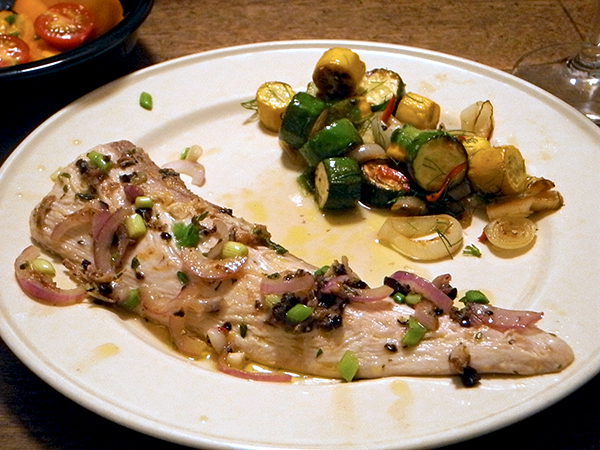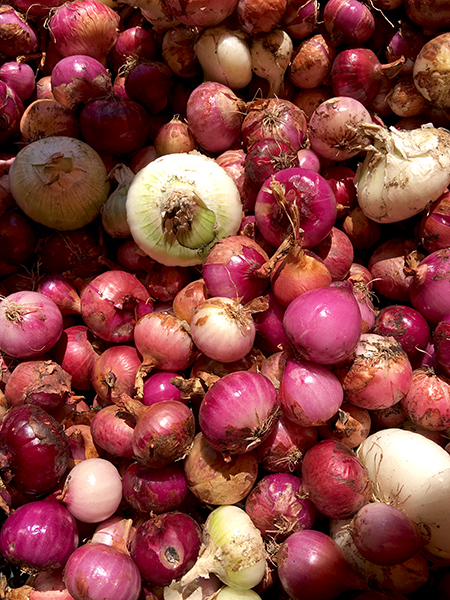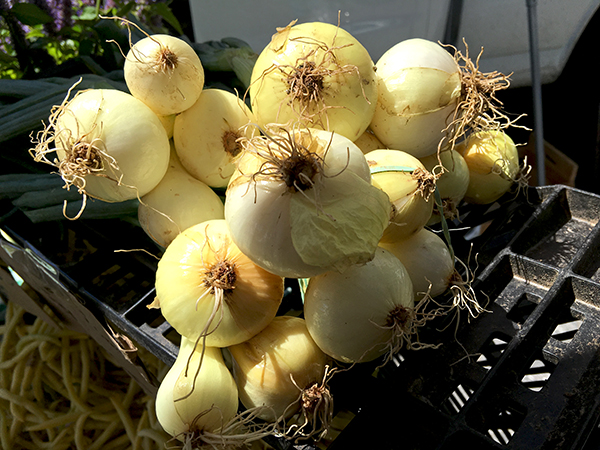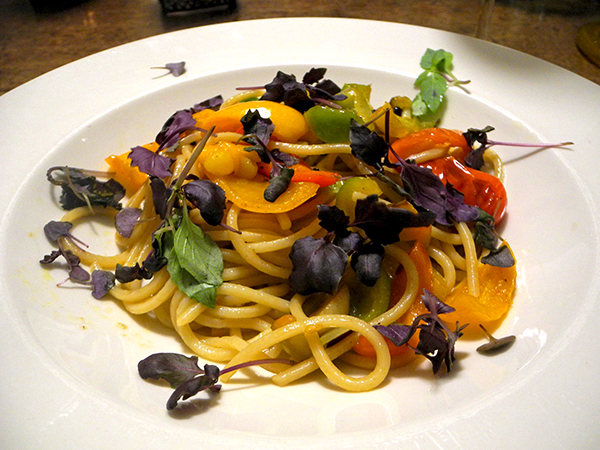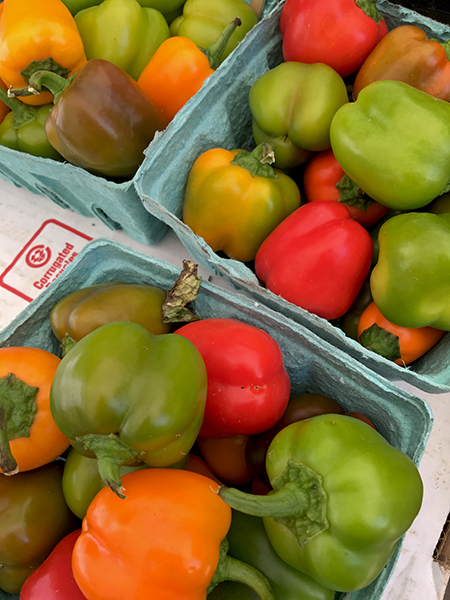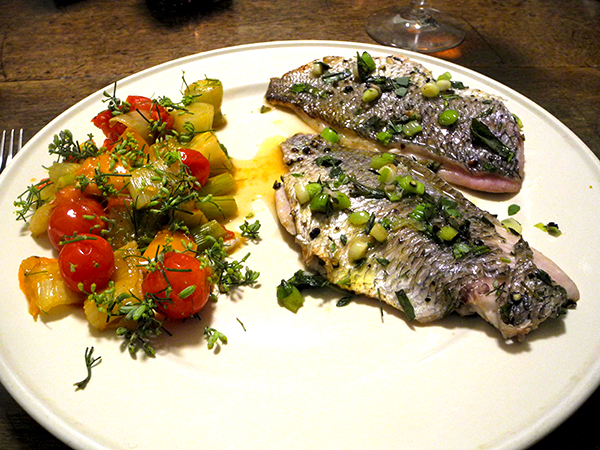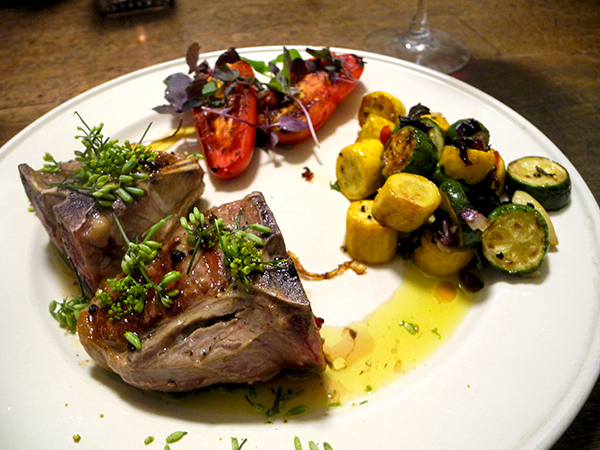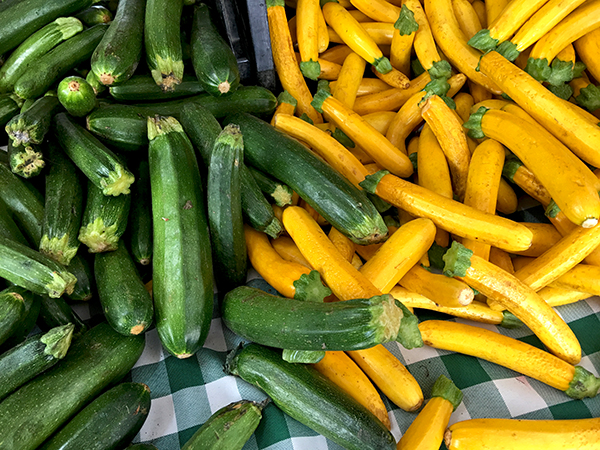

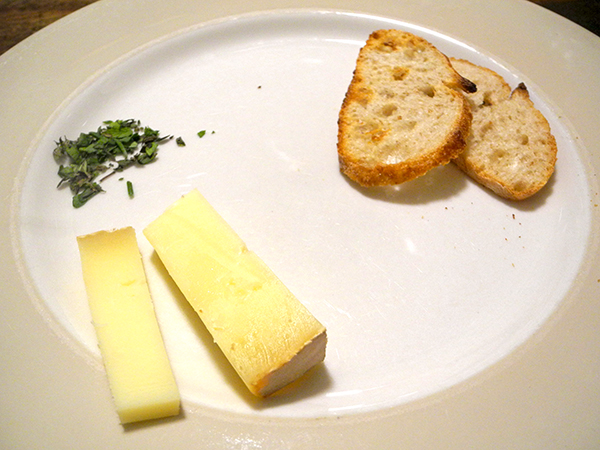
I’ve prepared these crab cakes, according to a quick search on this site, 15 times before, so we obviously see something in them. One of those things is the fact that they can be, and always have been, pretty much reinvented each time.
This time it got a little elaborate, although thanks to flavor elements and garnishes which were either already prepared or leftover from earlier meals, it was as easy as ever.
- duck rillettes from Hudson Valley Duck Farm, spread onto toasts of ‘whole wheat farm’ bread from Rock Hill Bakery and sprinkled with watercress from Berried Treasures Farm
- two terrific crab cakes from PE & DD Seafood, as always (the ingredients are crab, egg, flour, red & green peppers, garlic, salt, pepper, breadcrumbs, mayonnaise, milk, celery, and parsley), seared/heated in a cast iron pan, 3 to 4 minutes for each side, served on 2 plates on top of a salsa composed of quartered sun gold cherry tomatoes from Berried Treasures, chopped and combined with salt, freshly-ground black pepper, a bit of homemade French Basque piment d’Espellate purchased in a small town north of Baie-Comeau, Quebec last year from the producer’s daughter, much of one small red Calabrian chili pepper from Campo Rosso Farm, and some torn fresh basil, also from Campo Rosso Farm, after which the ‘cakes’ were drizzled with a small amount of an almost garum-like sauce made from a couple tablespoons of savory tomato juices (collected over 2 previous meals) mixed into a very small amount of a black olive tapenade (already shared with 2 earlier meals), with micro scallions from Two Guys from Woodbridge scattered over both the seafood and the salsa [to anyone following this blog, it’s pretty clear that I’m mad about micro greens]
- two small red pearl onions from Paffenroth Farms, thinly-sliced, sautéed in olive oil inside a large copper pan until softened, then lightly seasoned, followed by less than 2 handfuls of flat green pole beans from Norwich Meadows Farm (earlier halved, blanched, drained and dried), reheated with the red onions and finished with a little more salt, pepper, and some chopped lovage from Keith’s Farm
- a cheese course featuring only one cheese, ‘Pawlet’, from Consider Bardwell Farms, a small amount of chopped mixed fresh herbs, and very thin slices from the heal of a loaf of ‘whole wheat farm’ bread from Rock Hill Bakery, which I had toasted on my trusty ‘Camp-A-Toaster‘ in order to ensure a precise doneness
- the wine was a California (Central Coast) rosé, 99 Barrels Derek Rohlffs Santa Lucia Highlands Rose 2015
- the music was Handel’s 1726 opera, ‘Scipione’, Christophe Rousset conducting Les Talens Lyriques
